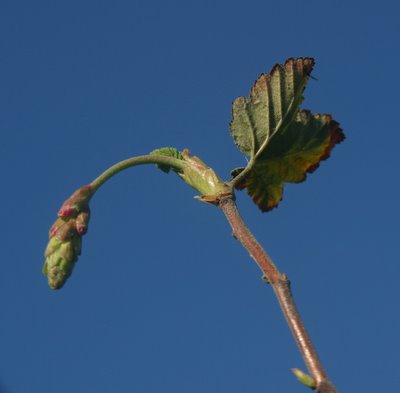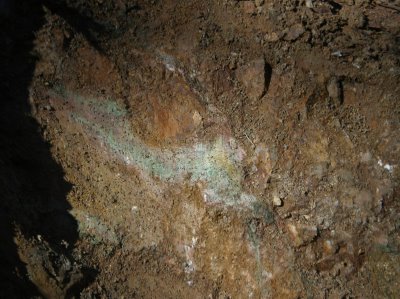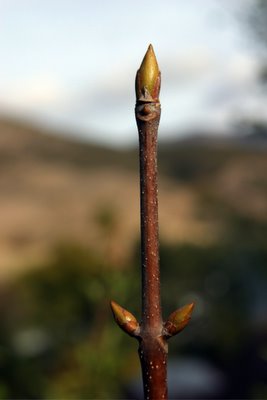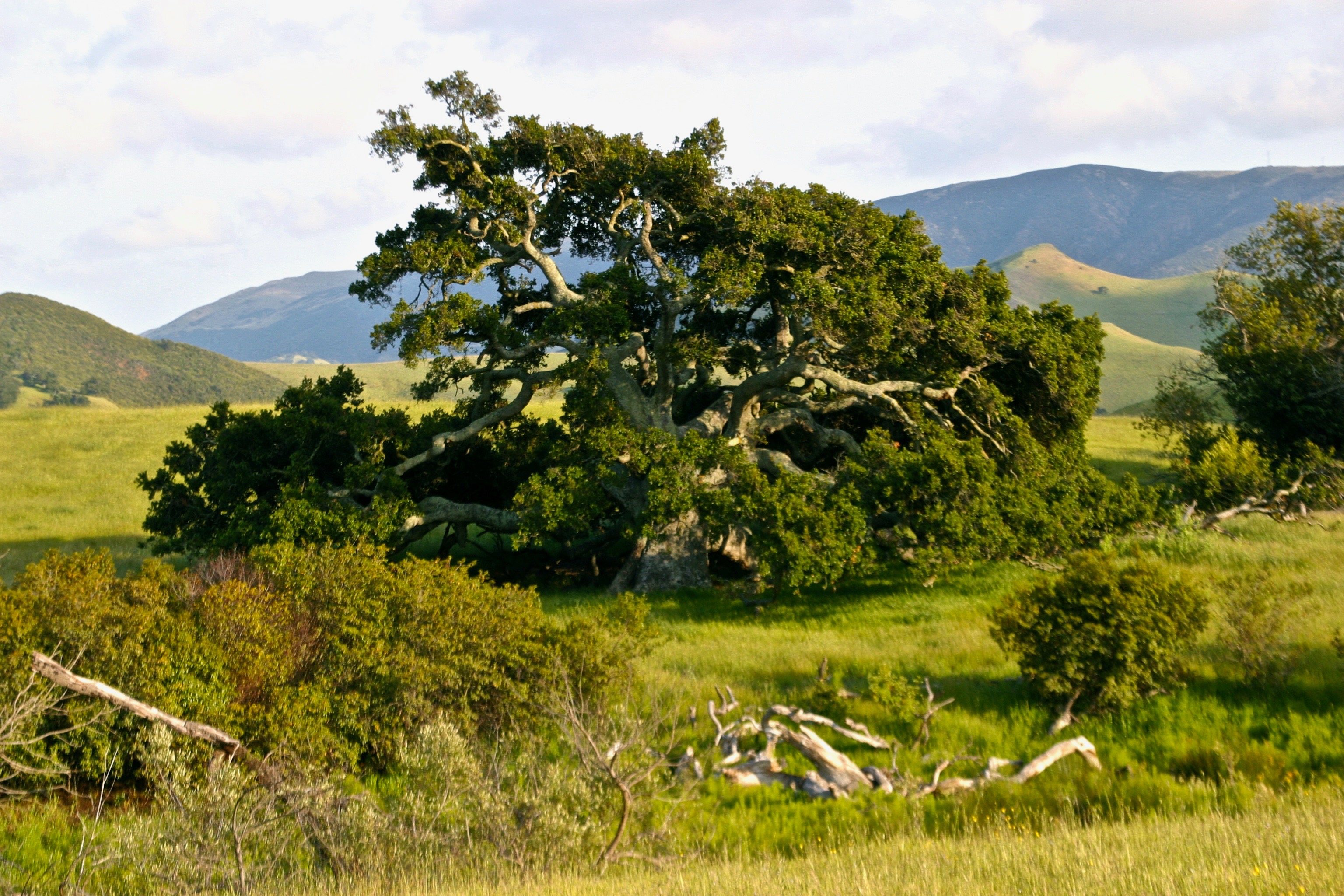Reviewed for “Books at High Noon,” Cal Poly University, San Luis Obispo, March 20, 2001, by Steven Marx, Professor of English.During the discussion following, the two proposals offered at the end of this review were supported by representatives of the faculty union(CFA), the staff union(CSEA), students(ASI), and the Cal Poly Land Faculty Seminar. At a meeting on March 29, these proposals were supported by a representative of the Cal Poly Administration’s Centennial Celebration organizing committee.
Introduction
Thanks for coming. Not only are you taking time during finals week crunch, but attending a talk by a speaker named Marx on the topic of Capitalism sounds like risky business.
The book is Natural Capitalism by Paul Hawken, Amory Lovins, and Hunter Lovins. I read this book the first time last summer, after tuning into a talk on National Public Radio by Paul Hawken one night while washing the dishes. I put down the sponge, turned off the water and just stood there, not wanting it to end, feeling that this was the kind of speech that could change the world. I had a flashback to 1965, standing in the kitchen of my graduate student house in East Palo Alto listening to voice of Mario Savio coming through the radio from the Sproul Hall steps in Berkeley.
Then I remembered that Rob Rutherford, professor of animal science, kept talking about Paul Hawken–how his ideas are important, how great it would be if he could come speak at Cal Poly. So I went down to The Novel Experience and bought the book.
Before I read it I checked its website–http://www.naturalcapitalism.org–for information on the authors:
“Paul Hawken began his career as an entrepreneur in the 1960s, when he founded Erewhon Trading Company, a natural foods wholesaling business. He went on to co-found Smith & Hawken, the retail and catalog company, in 1979, and Datafusion, a knowledge synthesis software company, in 1995. His next book, The Ecology of Commerce (1993), has become a classic text on business and environment, and continues to have a large impact on government and business.”
“Amory and Hunter Lovins are visionaries who have been around long enough to see many of their ideas become reality“and as consultants and advisers to many of the world’s largest corporations, they have helped shape the futures of the electricity, oil, real-estate, automobile and semiconductor sectors. Co-CEOs of Rocky Mountain Institute a nonprofit natural-resource thinktank, they have written dozens of books on resource policy and business, including Factor Four: Doubling Wealth, Halving Resource Use (1998).”
All three of these authors can be classified as environmentalists, but what distinguishes them and their method of proceeding is that they are equally business people and economists. Much of the book is an argument about accounting, supported by numbers– like the opening section of Thoreau’s Walden, which he titled “Economy.”
Though it’s long, dense and heavily documented, the book is clearly organized, well written and crammed with lively anecdotes that made it hard to put down. I also found it profoundly unsettling–not so much because it documents familiar bad news about the dangers of our present course, but more because of its good news of promise and possibility. Reading it makes you ardent to do anything within your power to spread the word and to help bring about the changes it advocates.
Like Rob, I found that this book is particularly suited for where we are right now–at Cal Poly, San Luis Obispo. Its message that “there is no true separation between how we support life economically and ecologically” and its revelation of the environmental, political, and moral significance of good engineering, design, resource management and business practices could lead our university to a new and higher mission statement for its second century of growth.
Each of its fifteen chapters can stand on its own, but cumulatively they build to a climax. The first chapter lays out the overall thesis with a historical perspective and an outline of general principles. Later chapters divide the subject into categories like Transportation, Real Estate and Construction, Agriculture, and Climate. The two penultimate chapters return to more general observations, and the final chapter ends with a discussion of the importance of disseminating the book’s ideas on university campuses.
Incidentally, the book can be downloaded chapter by chapter from the website.
Summary
Chapter 1, entitled, “The Next Industrial Revolution,” outlines the thesis developed in the rest of the book. The authors envision an industrial transformation occurring now as comprehensive and revolutionary as the First Industrial Revolution which began in the middle 18th century–the revolution which gave rise to modern industrial capitalism and vastly expanded the possibilities for material development.
The gains of this First Industrial Revolution have been achieved at immense cost to the earth.
- Since the mid 18th century, more of nature has been destroyed than in all prior history.(2)
- In the past 50 years, the world lost one fourth of its topsoil and one third of its forest cover.(4)
- In the past three decades, one third of planet’s natural wealth has been consumed.
- Every living system on the planet is losing ability to sustain the continuity of the life process.
The fact that stronger resource extraction technology still makes prices fall on natural commodities creates an illusion of prosperity because we are drawing our income not from earnings but from principal, from inherited wealth, or what the authors call Natural Capital.
What is Natural Capital? It’s the store of commodities produced by nature in its 3.8 billion year development process–commodities that we consume, like water, minerals, oil, trees, fish, soil, and air. It’s also all living systems–grasslands, savannas, wetlands, estuaries, oceans, coral reefs, riparian corridors, tundras and rainforests. These living systems supply not only nonrenewable resources but indispensible services, such as
- regeneration of atmosphere
- flood management, water storage and purification
- soil fertilization
- waste processing
- buffering against extremes of weather
Awareness of Natural Capital–the economic value of Nature as a system–extends the traditional economists’ definition of Capital as stored value. Added to their two forms of 1)financial capital–cash, investments, monetary instruments–and 2)manufactured capital–infrastructure, machines, tools, factories–are 3) natural capital–resources, living systems, ecosystem services and 4) human capital–labor, intelligence, culture and organization. Though it’s hard to assign monetary value to ecosystem services such as oxygen production by green plants, for which there are no substitutes at any price, the authors observe that the recent $200 million Biosphere experiment in Arizona was unable to maintain oxygen levels for 8 people. They estimate that these services worldwide are worth $36 trillion annually–about the same as the gross world product(5). They also report a recent World Bank study which found the sum value of human capital to be three times greater than all financial and manufactured capital.
Industrial Capitalism only includes financial and manufactured capital in its accounting and neglects to assign any value to our largest stocks of capital–natural and human. It portrays the creation of value as a linear sequence of extraction, production and distribution. Raw materials are introduced from “somewhere,” labor uses technology to transform resources into products, which are sold to create profits. Wastes are excreted “somewhere.”(7) This method of accounting leaves out the costs of extraction and of waste production to the environment. And the environment is not a minor factor but “an envelop containing, provisioning and sustaining the entire economy.”(9)
The new industrial system of Natural Capitalism employs an expanded set of values that include accounting for natural and human capital. It proposes four strategies to address its broader picture of economic activity.
- Radical resource productivity–that is industrial efficiency. This slows depletion at one end, lowers pollution at the other end and creates more jobs in between. Through the use of industrial technology labor productivity increased 200 fold between 1750 and 1820. Today, the “Factor 10 club” of governments and business foresees a tenfold increase of productivity from resource use promoted by improvements in technology and design.
- Biomimicry, which eliminates the very idea of waste by redesigning industrial systems on biological lines. “Spiders make silk strong as Kevlar but much rougher, from digested crickets and flies, without needing boiling sulfuric acid and higher temperature extruders. The abalone generates an inner shell twice as tough as our best ceramics, and diatoms make glass, both processes employing seawater with no furnaces. Trees turn sunlight and water into cellulose, a sugar stiffer and stronger than nylon and bind it into wood, a natural composite with higher bending strength and stiffness than concrete or steel. We may never grow as skillful as spiders, abalone, diatoms, or trees, but smart designers are apprenticing themselves to nature to learn the benign chemistry of its processes.”(16)
- A service and flow economy. This involves shifting from a perception of wealth as goods and purchases to a perception of value as desired services and satisfaction of human needs. “Manufacturers cease thinking of themselves as sellers of products and become, instead, deliverers of service, provided by long-lasting upgradeable durables.”(16) For example, the Carrier Corporation now sells “coolth” rather than air conditioners–they own and service and upgrade equipment(17), and “Interface Corporation¦leases warmth, beauty and comfort of floor covering services rather than selling carpets.” In Europe, the principle of Intelligent Product Systems makes manufacturers responsible for waste if their product cant be recycled, so products are designed to be reincorporated into “technical nutrient cycles” in which nothing can be thrown away. Such systems use less energy than extraction of new materials and provide more jobs.
- Investing in Natural Capital. This involves developing markets for activities which enhance and restore the environment, and it needs to be done internationally since degradation of environment“global warming and attendant storms, for example–is an international consequence.
The rest of the book describes “an array of opportunities¦that are real, practical, measured and documented” by which the second industrial revolution is going forward and the principles of natural capitalism are taking hold.
Chapter 2, called “Reinventing the Wheels,” prophesies an impending transformation of the automobile industry, the largest component of the modern economy worldwide. The technical and policy issues addressed by this chapter have direct bearing on the teaching and research carried out in Cal Poly’s Mechanical Engineering and Urban Planning Departments.
The authors claim that this industry is “well along the way to a Factor Four or greater breakthrough in resource productivity and is beginning to close its materials loops…”(22)
Modern cars are extremely inefficient, using only 20% of their fuel to turn the wheels and of that 95% moves the car, and only 5% moves the driver.(24) Lovins’ Rocky Mountain Institute designed a Hypercar (and put it into the public domain making it unpatentable), which reverses those efficiency ratios by being ultralight, low drag, and hybrid in propulsion. Once these cars, now in production, are successfully marketed, “oil will become uncompetitive even at low prices.” Even more radical resource productivity will be created by hydrogen fuel cell technology, which literally can take fuel out of the air and leave only water and oxygen as waste.
To realize this productivity and promote the sale of environmentally clean automobiles, the authors propose a system of “feebates” administered at no public cost by governments. Fees imposed on energy inefficient cars pay for rebates on those which which do less harm.
Other solutions to the “excessive automobility” which costs everyone involve reconfiguring transportation systems to make parking and driving bear their true costs–in road construction and maintenance, resource depletion, traffic jams, pollution, and accidents, fostering genuine competition between different modes of transportation. In addition to improving public transportation, sensible land use can be promoted over actual physical mobility.(41) “Most American building regulations require developers to provide as much parking for each shop office or apartment as people would demand if parking were free….diverts investment from buildings into parking spaces, making affordable housing scarcer.” Instead builders should be required to provide perpetual transit passes.
Chapter 3, entitled “Waste Not,” exposes the scale and consequences of Industrial Capitalism’s failure to follow the natural principle of recycling. This chapter’s topics represent the concerns of our Environmental Engineering, Facilities Planning and Operations departments.
“The critical difference between industrial and biological processes is that living systems are regulated by …feedback loops.”(49) In nature there is no such thing as waste. But our present economy consumes and disposes of unthinkable quantities of unrecoverable natural capital:
- “The US still gets 3/5 of its aluminum from virgin ore, at twenty times the energy intensity of recycled aluminum, and throws away enough aluminum to replace its entire commercial aircraft fleet every three months.”
- “The amount of waste generated to make a semiconductor chip is over 100 000 times its weight. Two quarts of gasoline and a thousand quarts of water are required to produce a quart of Florida orange juice 50
- “America wastes or causes to be wasted nearly 1 million pounds of materials per person per year. This figure includes 3.5 billion pounds of carpet landfilled…28 billion pounds of food discarded at home…3.7 trillion pounds of construction debris.”(52)
- Highway accidents cost us 150 billion a year
- Highway congestion 100 billion a year
- We spend 200 billion a year in wasted energy–just because we don’t employ same efficiency practices as in Japan
- We waste 250 billion on inflated and unnecessary medical overhead
- Our recordkeeping procedures for a ridiculous tax code cost us 250 billion a year.
- We also waste human capital: a billion workers in the world cant find jobs while “the U.S. has quietly become the world’s largest penal colony”–nearly five million men are in jail, awaiting trial or on parole.
Chapter 4, entitled “Making the World,” presents antidotes to this grim picture with principles and examples of industrial design that provide a better stream of services from smaller flows of stuff.(62) The kind of innovation described by this chapter is the concern of Cal Poly’s Department of Industrial technology.
The principle is fully developed in the German concept of extended product responsibility–the manufacturer has to take product back at end of its life. “In short, the whole concept of industry’s dependence on ever faster once-through flow of materials from depletion to pollution is turning from a hallmark of progress into a nagging signal of uncompetitiveness.”(81)
- Chemical engineers have cut US chemical firms’ energy intensity in half since 1970.
- The mass of an average European yogurt container dropped by 67 percent during years 1960-1990.
- Refrigerators now save 87 percent of their 1972 energy cost.
- High-temperature processes are replaced with gentler, cheaper ones based on biological models that often involve using actual micro-organizations–like those that Professor Cano at Cal Poly is developing for Bioremediation with Unocal.
- “Distributed intelligence” controls industrial processes with decentralized and sensitive instruments.
- Materials are saved with net shape manufacturing–rather than assembly
- “Disposable” cameras are actually recycled.
- IBM remanufactures computers.
- Xerox makes every part of its machines reusable or recyclable.
Chapter 5, “Building Blocks,” applies the principles of Natural Capitalism to construction and real estate development industries. This is a chapter for our Architecture, Construction Management, and Regional and City Planning departments.
Green buildings, like the high-rise Amsterdam bank described by the authors, use 92% less energy and create greater worker productivity and satisfaction by use of proper placement and orientation, passive heating and cooling principles, and full insulation. Such buildings are designed by a “charette” process of collaboration that crosses traditional professional boundaries.(87)
A major obstacle to true economy is created by the fact that architects and engineers are now paid on a percentage of the cost of buildings rather than on the basis of what they save in cost. The way to overcome such obstacles is to replace disincentives with financial incentives for conservation, for instance,
- overcoming the “split incentive problem in which one party selects the technology while another pays its energy costs,” for example with lease riders for fair sharing of savings between landlords and tenants
- changing the home appraisal process to evaluate a house’s energy efficiency
- requiring “feebates” for new energy hookups–energy efficient buildings get rebates paid by higher fees on energy inefficient ones.
The same kind of incentives–crediting developers for reducing automotive trips and numbers of cars per family–can promote real estate developments that “challenge the American habit of ceding community design to traffic engineering.” Such challenges are have been dubbed the “new urbanism,” and include neo-traditional village-style layouts, with neighborhood grocery stores, mixed-use occupancy, and narrower, tree shaded streets.
Chapter 6, “Tunneling Through the Cost Barrier,” and Chapter 7, “Muda, Service and Flow,” explore more abstract issues of economics that have to do with positive feedback loops in long term planning and financing of resource productivity. Both refute the generally accepted notion that increased efficiency is purchased at a rate of diminishing returns, and show rather that the tendency is toward incremental snowballing.
Chapter 8, “Capital Gains,” returns to the accounting principles of Natural Capitalism and proposes ways to overcome the obstacles to their implementation. Issues of accounting, subsidy and tax policy here are within the purview of Cal Poly’s faculty in Business, Economics, Political Science, and Natural Resource Management.
Economic benefits and services provided by natural systems include:
- oxygen production(183)
- biological and genetic diversity maintenance
- purification of water and air
- storage cycling and distribution of freshwater
- regulation of chemical composition of the atmosphere
- maintenance of migration and nursery habitats for wildlife
- decomposition of organic wastes
- sequestration and detoxification of human and industrial waste
- natural pest and disease control by insects, birds, bats etc
- maintenance of genetic library
- fixation of solar energy and conversion into raw materials
- management of soil erosion and sediment control
- flood prevention and regulation of runoff
- protection against cosmic radiation
- regulation of chemical composition of oceans
- regulation of local and global climate
- formation of topsoil and maintenance of soil fertility
- production of grasslands, fertilizers and food
- storage and recycling of nutrients
Yearly monetary values for such services can be calculated at
- $1.3 trillion for atmospheric regulation of gases
- $2.3 trillion for waste processing
- $17 trillion for nutrient flows
- $20.9 trillion from marine systems especially coastal environments
No matter how uncertain these specific amounts, establishing values for natural stocks and flows is the first step of incorporating them into planning, policy and public behavior–of getting people to recognize that these services require investment for preservation and replacement.
Obstacles to such investment in natural capital are perverse and often hidden subsidies by governments that promote abuse and waste–to the tune of $1.5 trillion per year.(161) For example:
- $6.7 billion paid by the German government to subsidize Ruhr Valley coal for jobs. It would be cheaper to pay off workers and close mines.
- $464 billion per year provided by the U.S. government for automobile industry subsidy–including road construction and the cost of the Persian Gulf war
- Subsidies to restrain surplus Agricultural production of $330 Billion year, including $800 million per year to tobacco farmers
- Huge grants to mining, logging and waste disposal industries, which encourage waste and discourage resource efficiency, including the U.S. Forest Service, “the worlds largest socialist road builder.”
At the same time government provides minimal support for clean technologies that can benefit the environment. One way of overcoming barriers to investment in natural capital is by tax shifting–a scheme that can appeal to conservatives and liberals alike. The authors propose to eliminate personal and employer taxes on labor–all income and payroll taxes–and to shift those taxes to sources of resource depletion, waste and pollution, like
- Emission of gases causing climatic change
- Nuclear power
- Toxic fuels
- Pesticides, synthetic fertilizers tobacco and alcohol, piped in water, old-growth timber, free-run salmon, irrigation water from public lands, all minerals from the ground, and waste sent to landfill or incinerator
Eliminating income tax would promote employment, since employees will not be as expensive to hire. Lower labor costs will reduce the rate of return required from investments and thereby benefit the environment, since the higher rate of return required on investment, the greater the likelihood of liquidation of natural capital.(166)
Chapter 9, called “Natures Filaments,” is of special interest to people in Cal Poly’s Natural Resource Management and Forestry programs, as well as to paper consumers in all departments and to building maintenance staff. It discusses the natural capital of forests, which is now being depleted for building materials and paper.
“The world consumes five times more paper now than in 1950”; we live in “a culture in which paper is universally available, priced at perhaps a penny a sheet and rarely paid for or thought about by its users.”(173) Sustainable forestry methods are known but not widely practiced.
Three ways for New Industrialism to deal with this waste of natural capital are to reduce demand, make production more efficient and increase recycling.
Chapter 10, “Food for Life,” raises issues that affect several departments in Cal Poly’s College of Agriculture, including Soil Science, Crop Science, Animal Science, and Agribusiness.
Judged by raw output, the industrialization of farming–or the Green Revolution–has been a triumph of technology, producing larger and faster maturing crops with high yield seeds, biocides, irrigation and nitrogen fertilizers.
But, according to the authors, this triumph has created deepening problems. Actual returns are diminishing and harvests are volatile. Two fifths of food production energy goes to processing and distribution and another two fifths to cooking and refrigeration by final users. Only one fifth is used on the farm, half in chemicals. We use ten times as much fossil fuel energy to produce it as food returns. The costs and liabilities of this system to our Ecosystem are unaccounted for.
- Soil, “the ultimate natural capital,” which the Chinese call the mother of all things, is being lost to erosion faster than it’s being produced, and is suffering overall reduction of organic fertility.
- Genetic diversity of all food crops is being reduced. For instance, India is replacing 30,000 native varieties of rice with one super variety; seed banks are being neglected(195); agrochemical companies are seeking to makes themselves the sole lawful proprietors of the world’s legacy of plant diversity
- There has been a twenty-fold increase in insecticide use since 1948“up to a billion pounds per year– but today insects get 13 percent of yield compared to 7 percent then.
- “Organic farmers recognize that healthy systems needs enough pests to provide enough food to support predators to so they can hang around and keep the pests in balance.” (197) Genetic engineers now put the Bt toxins that are natural pesticides into plants, but pests quickly evolve resistance, thereby eliminating the original natural benefits.
- Widespread monoculture reduces resistance to disease and adaptation to climate change. “Monoculture’s chemical dependence requires enormous amounts of fertilizers to make up for the free ecological services that the soil biota, other plants and manure provide in natural systems.”(197)
Solutions to these growing problems are provided by alternative agricultural practices employing principles of natural capitalism. As opposed to the Green revolution, “Ecoagriculture” substitutes good husbandry and local seed for otherwise purchased inputs. Resource productivity can be increased in biomimetic, closed-loop, nontoxic innovations such as
- crop drying using a no energy windmill vacuum in silos to create dry air flow
- sustainable barn architecture
- community supported agriculture
- substituting information for resources with close monitoring of soil moisture and biota(203)
- attracting wildlife to harvest non-food crop residues instead of burning them
- reconfiguring livestock raising with biomimicry
- “Pioneers of ecologically based grazing are showing it is far better to restore and maintain grazing by cattle and other animals on grasslands that typically coevolved with grazing animals and cannot remain healthy without them.”(207)
- restorative and biological farming organized on traditional family or village scale
Chapter 11, “Aqueous Solutions,” deals with issues of fresh water use and conservation of special interest to Cal Poly’s Agricultural Engineering and Environmental Engineering departments.
Chapter 12 outlines the problems of global climate change, to which some people respond with denial and others with hopelessness.
The authors present a plan not only for solving the problems but turning them into a business opportunity. They claim that the growing urgency and cost of global warming will push us in the right direction. The primary cause, the release of carbon into the atmosphere from burning of fossil fuels, can be reversed. U.S. growth in efficiency has actually lowered energy use, in contrast to projections in the 1970’s. But there’s a long way to go: America’s power stations turn fuel, still mostly coal, into an average of 34 percent electricity and 66 percent waste heat. In contrast, Denmark converts 61 percent of its power-plant fuel into useful work.(247)
According to the authors, increased efficiency and reduction of emissions can be achieved largely through the creation of business credits and incentives such as those developed in the 1997 Kyoto agreement. The sulfur emissions credit program has reduced them 37 percent in a decade, and the same policy can work with carbon trading, especially with the use of higher rewards for “early adopters.”
Chapter 13, “Making Markets Work,” outlines other business strategies to make environmental sustainability compatible with profitability. This chapter again is directed specifically to concerns of Cal Poly’s College of Business. “The goal of natural capitalism is to extend sound principles of the market to all sources of material value…[and] to guarantee that all forms of capital are as prudently stewarded as money is by trustees of financial capital.”
The authors proclaim that the remedy for unsustainable market activities is adoption of sustainable market activities. Such activities include creating markets in avoided resource depletion and abated pollution credits which will maximize competition in saving resources.(261)
One example demonstrating the feasibility and success of this kind of market is the toilet retrofit program developed in San Luis Obispo county. [This program is attributed to the City of Morro Bay, but it was also carried out in the City of San Luis Obispo.] When the city ran short of water, it required developers to save twice as much water at another place in town to get building permits. Two fifths of the houses got retrofitted within four years.
Another method is for Utilities to make markets in negawatts, allowing energy saving to compete against against energy production. “Every form of avoided resource depletion and prevented pollution is a potential candidate for an entrepeneur to find and exploit inefficiencies…the bigger the problem, the bigger the potential gain.”(280)
Yet another example of making markets work to promote sustainability is provided by the collaboration of climate scientists, who “Greenpeace introduced…to leaders of the European insurance and reinsurance industry. They are now investing in climate protection.”
In “Human Capitalism,” the book’s next-to-last chapter 14, the authors dramatically shift emphasis from natural capital to human capital, applying the “…same design philosophy, to achieve the same elegant frugality, with which whole-system engineering meets technical demands by delivering multiple benefits from single expenditures.” This chapter in itself has the impact of a whole book. It’s a vivid and plausible description of a Utopia, one whose actual existence is confirmed by numerous city websites, another book by Bill McKibbon, and a video available locally at Insomniac Video.
Known as “the ecological city,” Curitiba is located in the Southeastern Brazilian state of Parana and has a population of about 4 million people–the size of Houston or Philadelphia. There, “responsible government in partnership with vital entrepenurship has succeeded better than most cities in the U.S.” They have implemented “hundreds of multipurpose, cheap, fast, simple homegrown, people-centered intiiatives…treating all its citizens–most of all its children–not as burden but as most precious resource.”
“Teasing apart the strands of the intricate web of Curitiban innovation reveals the basic principles of Natural Capitalism at work in a particularly inspiring way.”(307) Resources are used frugally. New technologies are adopted. Broken loops are reclosed. Toxicity is designed out, health in. Design works with nature, not against it. The scale of solutions matches the scale of problems. “The existence of Curitba holds out the promise that it will be first of a string of cities that redefine the nature of urban life.”(308)
Chapter 15, the final chapter of the book, entitled, “Once Upon a Planet,” leads right to where we sit today.
The change in accounting procedures which Natural Capitalism demands requires a change of mental models. The largest institution addressing mental models is our schools.(315) Colleges, universities and public schools can change their impact on the environment in two fundamental ways. “They create the citizens, MBAs, engineers and architects that create our world. At the same time they spend $564 billion a year to do so, including 17 billion annually in new construction on colleges and universities.” According to David Orr of Oberlin, a leader of the campus ecology movement, “…changing the procurement, design and investments made by our educational systems represents a hidden curriculum that can teach as powerfully as any overt curriculum.”
Conclusion
Many our University’s departments exist to address the subjects of this book. We are located where crucial intersections and practical applications can take place. We’re blessed with resources that are often treated with the outmoded attitudes of the old industrialism. If Cal Poly can turn around to become an “early adopter” of Natural Capitalism, we can help bring along the rest of the world.
I’d like to offer two proposals: First, that we follow Rob Rutherford’s suggestion and get one of the authors to speak here and start the ball rolling toward a campus conference on Natural Capitalism. Second, that we get Hunter and Amory Lovins’ Rocky Mountain Institute to be consultants on our recently adopted $500 million twenty-year campus capital expansion program known as the Master Plan.
Natural Capitalism is book thick with ideas, facts and figures presented by entrepeneurs and engineers. It’s a set of concrete suggestions for improving the way business gets done proposed by economists. It’s a diagnosis of what’s wrong with the planet and the way we’ve been treating it delivered by ecologists. It’s an exploration of the relation between nature and technology written by philosophers. Finally it’s a testament of faith that can awaken us to reality uttered by prophets.
That’s emphasized by the logo on its cover. What appears at first like a coiled steel spring, on closer examination turns out to be the springtime symbol of a fiddlehead fern. The book’s mission is confirmed by its epigraph, a short poem called “Loaves and Fishes,” which concludes: “People are hungry/and one good word is bread/ for a thousand.”

 Rounding the lion rock, I came across two white egrets. I was transfixed by their yellow eyes and graceful head plumes but they werent interested in my company. They slowly flapped their huge wings, lifted their legs and flew across the flat water.
Rounding the lion rock, I came across two white egrets. I was transfixed by their yellow eyes and graceful head plumes but they werent interested in my company. They slowly flapped their huge wings, lifted their legs and flew across the flat water.



















 This is ribes sanguineum glutinosum, or pink flowered currant. The specimen between the neighbors’ towering second story and our roof has grown 10 feet, as fast and as tall as the Redwood next to it. Another in total shade under the fence, which I planted to replace a vigorous non-native tree I cut down, has only reached two feet, but is also showing new leaves. The two in back, on the steep north facing slope where there’s very little soil, have reached about four feet. Bert says “This Ribes is more drought tolerant than most of the drought resistant plants of the trade, but in a native garden plant towards the wettest section… .”
This is ribes sanguineum glutinosum, or pink flowered currant. The specimen between the neighbors’ towering second story and our roof has grown 10 feet, as fast and as tall as the Redwood next to it. Another in total shade under the fence, which I planted to replace a vigorous non-native tree I cut down, has only reached two feet, but is also showing new leaves. The two in back, on the steep north facing slope where there’s very little soil, have reached about four feet. Bert says “This Ribes is more drought tolerant than most of the drought resistant plants of the trade, but in a native garden plant towards the wettest section… .”


